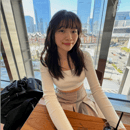Today was Nagasaki’s Peace Memorial Ceremony.
On August 9, 1945, at 11:02 a.m., the atomic weapon, disturbingly called “Fat Man,” detonated in Nagasaki, leaving a mark on humanity’s conscience that is still felt today. It is estimated that by the end of 1945, approximately 140,000 people in Hiroshima and 74,000 in Nagasaki had lost their lives, and many more from the injuries and radiation over the years.
As university students, we must reflect on this chapter in history, not just as a tragedy but also as a lesson for the present and future. The 79th anniversary of the Nagasaki bombing commemorates the victims and is a time to contemplate the broader consequences of the bomb. It is a call to respect those who have suffered and guarantee that such destruction does not happen again.
This year, Prime Minister Fumio Kishida attended the commemorative ceremony in Nagasaki’s Peace Park, which was near the bombing’s hypocenter. The year’s ceremony had an unprecedented number of participants—representatives from 115 countries and regions came to pay their respects. G7 Ambassadors (6: United States, Britain, Germany, France, Italy and Canada) did not attend because Israel was not invited. In addition to this, Russia had not been invited. Nagasaki’s Mayor Shiro Suzuki had shared that they did not invite Isreal (while it was a “difficult decision to make”). They wanted “to mourn the atomic bomb victims in a calm and solemn atmosphere.” This could possibily be due to how Japan has seen various public protests demanding Israel end its offensive against Hamas in the Gaza Strip, which has led to thousands of civilian casualties.
Current political aspects have been interlaced with today’s events. Still, the attendance from the people of Japan and many other countries highlights the universal relevance of Nagasaki and also Hiroshima’s tragedy, reminding us that the search for peace transcends across countries and generations.
The ceremony included tributes, such as the release of white doves, representing peace, from behind the renowned statue that overlooks Peace Park. This statue, created in 1955 by renowned sculptor Seibo Kitamura, is a strong emblem of Nagasaki’s tenacity and its ongoing call for peace. Every year, the anniversary celebration takes place in front of this statue, which has become a place for meditation on the tragedies of war and the prayers for a peaceful future.
Students from the「長崎市立山里小学校; Yamazato Elementary School 」sang the song 「あの子; Ano Ko」 written in 1949 by Takashi Nagai and composed by Kimio Kino. The lines, 「ああ、あの子が生きていたならば; Ah, if only that child were still alive」, express continuous reminder of the lives lost and the potential futures irrevocably changed by the bombing.
Another particularly important event that took place today is the Prime Minister’s meeting with survivors who were exposed to the bomb outside the officially recognized 「被爆者; hibakusha」regions. The「被曝体験者;hibaku taikensha」have long-sought recognition for their suffering, as their exclusion from official survivor status has left them without the same access to medical support and other benefits.
Among the many remarks given at this event, one phrase was repeated throughout the ceremony: 「長崎を最後の被爆地に; May Nagasaki be the final place that was a victim of the nuclear weapon」 This powerful phrase expresses Japan’s hope and wishes that Nagasaki’s catastrophe never occur again and that Hiroshima and Nagasaki will be the only cities to suffer such a tragedy. It is a message that we, the next generation, must take on this message.
NOTE FROM THE AUTHOR
Reflecting on the Nagasaki bombing calls for recognizing the long-term impact on survivors and the generations that continue. The bomb’s psychological and physical scars have lasted decades, with many hibakusha suffering from long-term health problems. Their experiences shed light on the human cost of nuclear weapons and also a compelling case against the spread of them. For those interested in knowing more about today’s memorial service in Nagasaki, Japan’s national news station NHK has covered the events. You can read more about the story here.


